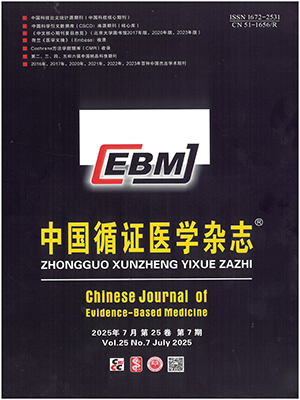The estimation of the minimal important difference (MID) in patient-reported outcomes (PRO) relies on various selection principles and statistical methods, resulting in varying degrees of credibility among studies. When applying these findings, it is crucial to consider their evaluation outcomes. In the context of widely accepted MID studies based on the anchoring method, the credibility of the MID of PRO is influenced by the selection of anchors and the statistical methods employed for estimation. Variations in the anchors utilized, differences in clinical trial designs, disparities in the characteristics of measurement subjects and environment, as well as the control of biases in studies, can all contribute to inconsistencies in the MID of PRO. In response to this, McMaster University in Canada has developed a credibility evaluation tool specifically for MID studies in PRO. The tool comprises five core items and four additional items. The five core items encompass an evaluation framework that assesses: (1) Is the patient or necessary proxy responding directly to both the PRO and the anchor? (2) Is the anchor easily understandable and relevant for patients or necessary proxy? (3)Has the anchor shown good correlation with the PRO? (4) Is the MID precise? (5) Does the threshold or difference between groups on the anchor used to estimate the MID reflect a small but important difference? The four additional items concerning transition-rated anchors assess: (1) Is the amount of elapsed time between baseline and follow-up measurement for MID estimation optimal? (2) Does the transition item have a satisfactory correlation with the PRO score at follow-up? (3) Does the transition item correlate with the PRO score at baseline? (4) Is the correlation of the transition item with the PRO change score appreciably greater than the correlation of the transition item with the PRO score at follow-up? Given the relative weights of each item in the tool are uncertain and environment-dependent, items are not scored; instead, an overall judgment is made using a qualitative rating approach. This article introduces the specific items of this tool and illustrates the evaluation process through a case study to improve its use in optimizing PRO results presentation and interpretation in clinical trials, reviews, assessments, and guidelines.
Citation: LI Meichen, WEN Zehuai, ZHOU Li. Interpretation of credibility evaluation tools for minimal important difference in patient-reported outcomes based on anchoring methods. Chinese Journal of Evidence-Based Medicine, 2025, 25(8): 979-986. doi: 10.7507/1672-2531.202410066 Copy
Copyright © the editorial department of Chinese Journal of Evidence-Based Medicine of West China Medical Publisher. All rights reserved




